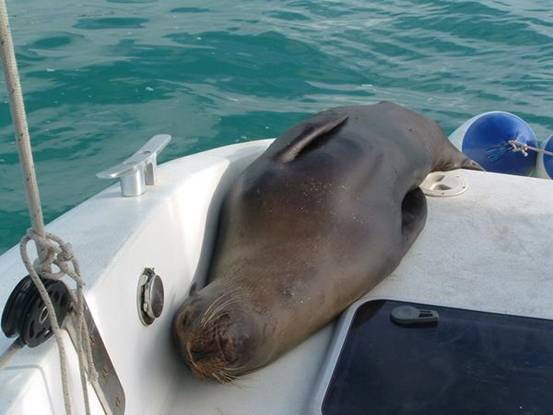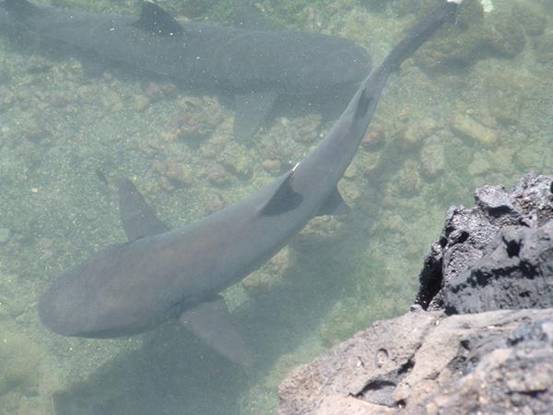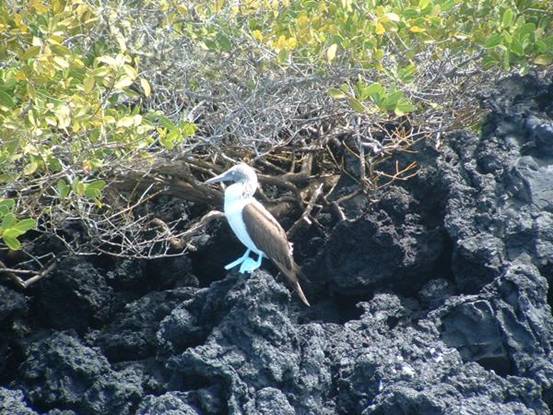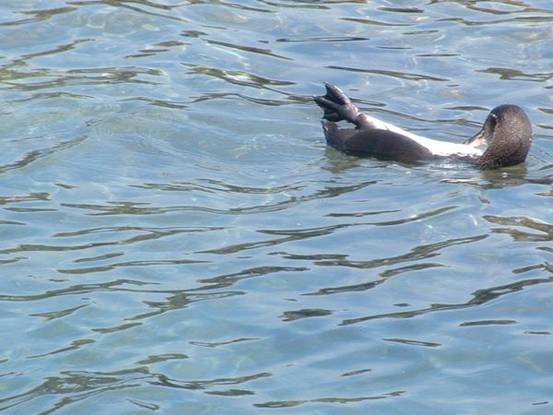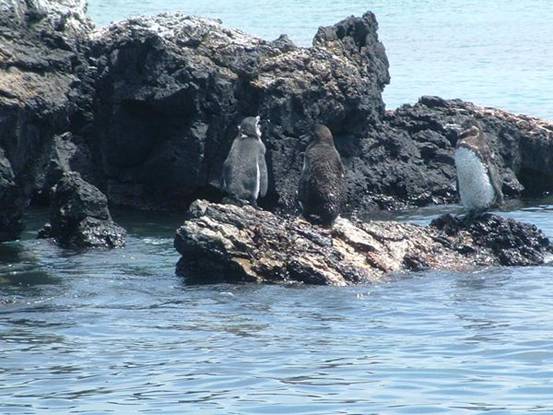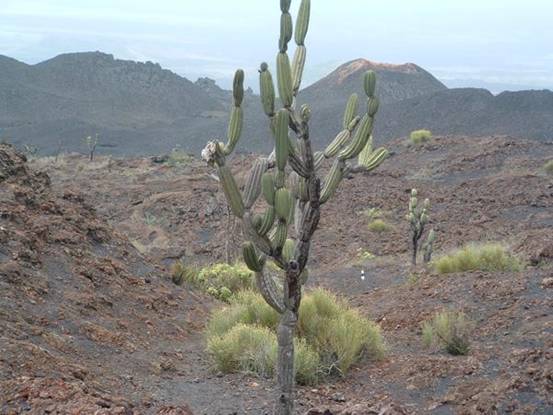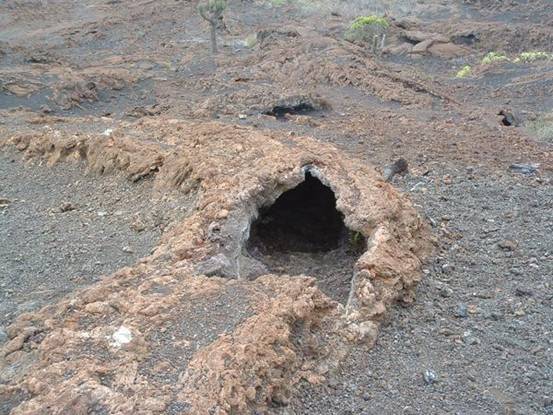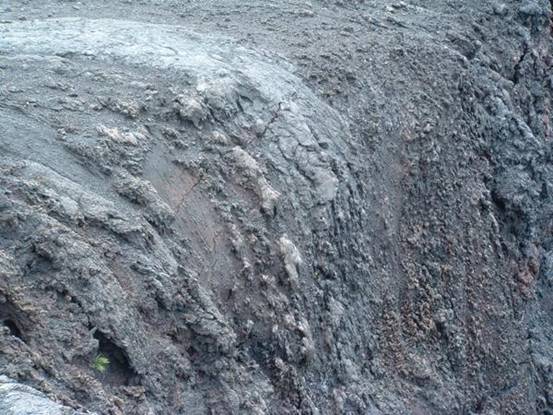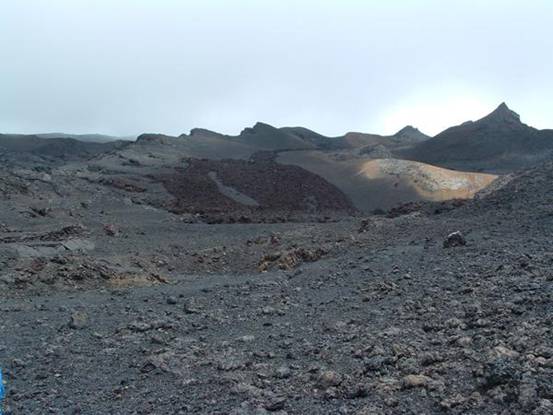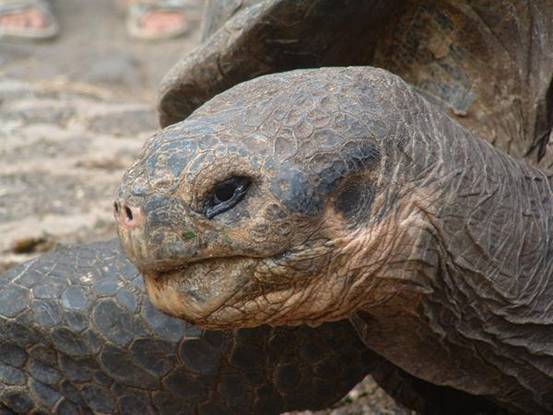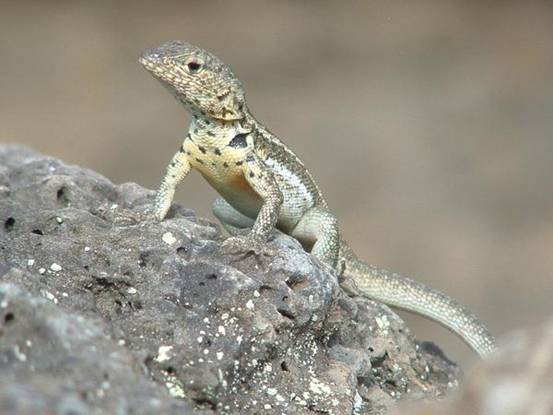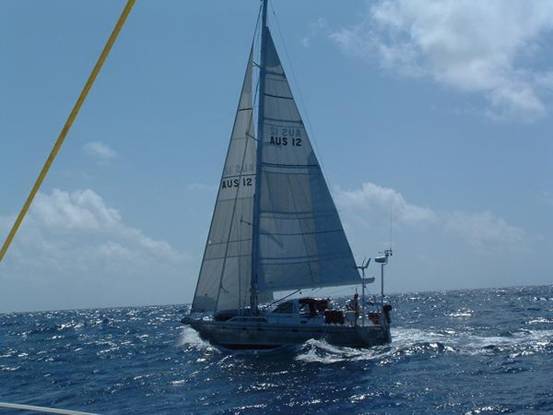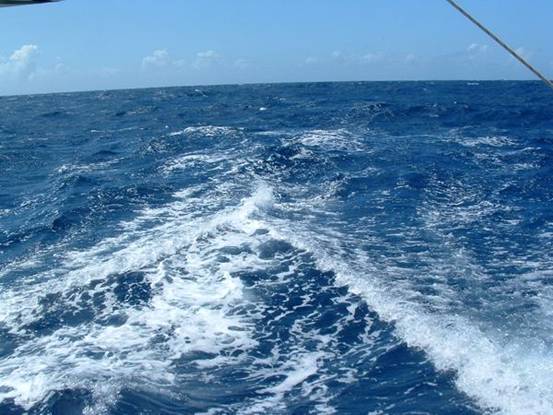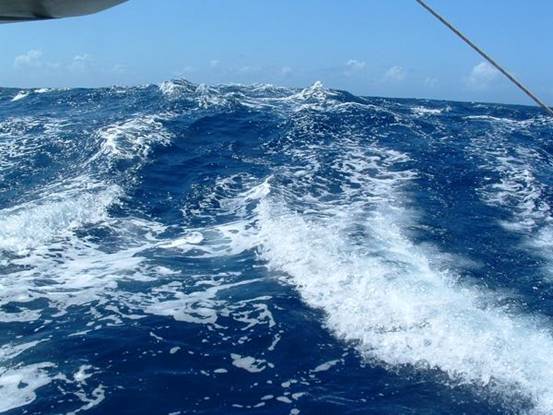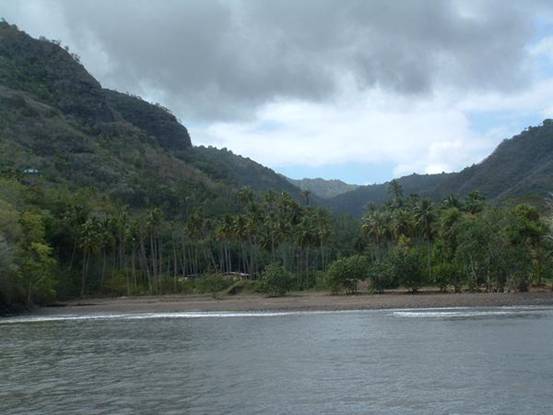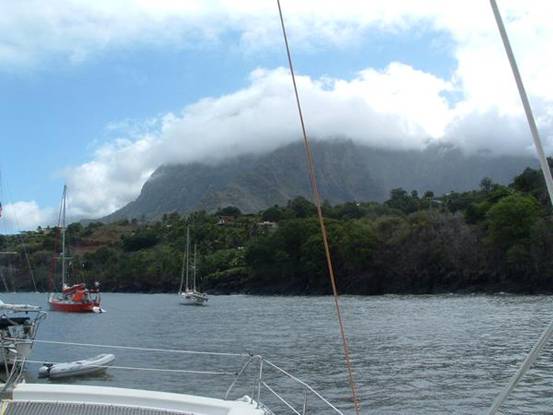GALAPAGOS PART 3 AND THE PACIFIC CROSSING

|
Galapagos part 3, and the Pacific crossing 9:48.2S
130:01.8W Isabella and Tony left us in
The anchorage was surprisingly well protected from the ever-present Pacific swell, with just half a dozen visiting yachts. The town is very tranquil, with sandy roads and palm trees. It contains a few small bars and restaurants, some hostels for visitors and one shop; little else. Having defeated
the multitude of sea lions in
We succumbed to the charm
of Hilda
Hilda making the most of
our hospitality Unfortunately sea lions are not well house (boat) trained. They also have some form of oil in their fur, so they left a horrible, smelly mess. After two days we decided enough was enough and banned Hilda, and her pup, from the boat and put up extra defences. Hilda was most put out and while I was in the water cleaning the waterline (there is a nasty alga in the Pacific which grows like mad) she decided to have a face to face confrontation (face to mask actually). However it was all quite amicable and it was agreed she should try some other boat. There are a small group of lava islets next to the anchorage, which are past of the National Park so we took a guided tour in a small boat. As well as the usual (so mundane!) sea lions, marine iguanas and pelicans there was a colony of Blue-footed boobies and also a small colony of Galapagos penguins (they used to swim past the boat each morning) and a narrow channel in the lava that white-tipped sharks use as a resting area.
White tipped reef
sharks
Self-explanatory to most
people, but there’s always one!
Blue-footed
booby
Lazy Galapagos
penguin
Galapagos
penguins
And more
penguins Next day we chose to join a guided group to walk up to and round the caldera of the Sierra Negra volcano. It is apparently the second largest caldera in the world, about 10km in diameter, and about 600 metres to the floor. However the ‘guara’, a local misty rain had descended so we saw nothing at all, and endured an 8-mile muddy, wet hike for our efforts. The one saving grace is that in the northern side the weather lifted and we were able to explore the lavas flows of Vulcan Chico which last erupted in 1979. It was extraordinary to see how vegetation develops on the flows of 5000 years ago, 3000 years ago, and just 31 years ago.
These cacti are over 1000
years old
Lava tunnel, Volcan
Chico
Lava
flow
Volcanic
landscape We left Isabella
to go to Puerto Ayora, on Isla Santa Cruz. This town is the centre of the
Galapagos tourist industry and is not as attractive as the other ports we had
visited. The main reasons for coming here we to pick up a new crew, re-provision
the boat for the Pacific crossing and to see the
‘Lonesome George’, the last
of his species of giant tortoise
Iguana,
Handsome beast, aren’t
I?
Galapagos lava lizard,
another handsome beast
Me too! Heron,
Local
taxi! Susana, a friend
of ours from New Zealand, was due to arrive next morning, but when we checked
our e-mail that evening we discovered that Qantas would not allow her on the
plane without a return ticket from Equator, even though she explained that she
was sailing out. We sent a letter, but to no avail and sadly, Suze could not
join us. So it would just be the pair of us for the 3000-mile crossing to the
Marquesas Islands in The Champions!!!!. Now where was I?
Oh yes, crossing the The Pacific crossing This is the longest passage without land that most cruising sailors are likely ever to undertake. Give or take a mile or so it is 2985 miles from Santa Cruz in the Galapagos to Hiva Oa in the Marquesas islands in French Polynesia. No voyage of this length is started without some trepidation, especially as this time it was just the two of us for the first time for a really long passage With final provisions purchased and our authorisation to depart from The Port Captain in Puerto Ayero we set off at midday on Thursday 20th May. The first couple of days of a long passage are always tiring as one gets used to the watch system and a maximum of three hours sleep at a time. We were helped here by the light winds on leaving the Galapagos, which made for easy relaxed sailing. By day 3 we were into the South-East trade winds and speeds began to build. For the next 7 days we averaged a speed of 10 knots, covering up to 250 miles a day. Most of the time we romped along at a steady 9 – 11 knots, with lots of fast bits up to 15 knots and the occasional ‘fizz’ of 16 or 17 knots. Snow Leopard was really in her element. The seas were reasonable and life on board really very comfortable, always accompanied by the noise of water rushing past the hulls. As predicted, the wind direction began to back from south-east to east, which meant that we had increasing difficulty sailing low enough to maintain our required course. By day 10, with about 750 miles to go, we were unable to sail within 20 degrees of our required course. So, with a lumpy sea complicating matters, we decided that the most efficient and certainly the most comfortable tactic was to drop the mainsail and sail directly downwind on course under headsails alone. This did slow progress, but also enabled us to get a decent sleep. First with the Code 0 (large, light genoa) and then, when the wind increased to a steady 25-28 knots, reduced to the jib, we ‘ambled’ downwind. I say ‘ambled’ because the daily mileages dropped to between 188 and 224 miles, with average speeds of 7 -9 knots, but still with plenty of fast bits. Life on board developed into the usual routine of keeping watch, eating and sleeping (a lot of sleeping!). Night watches were just a question of keeping awake as there was so little to do. We both employed different strategies, Lucy listened to music or did french lessons on the ipod, whereas I played cards on the computer and listened to different music. What did we see? Well, a lot of sea and sky and not much else. We did pass a big fishing boat on Day3, and next day caught up with the yacht ‘Mohea’ also en route to the Marquesas. We chatted on the radio and took pictures of each other’s boat then waved ‘bon voyage’ and continued on our ways. On Day 10 we passed the container ship ‘Mersk Jackson’ and the captain came on the radio for a chat (he too is a sailor) and gave us his latest weather forecast. Otherwise, a few seabirds, shearwaters and tropicbirds mainly, a turtle, a few dolphins, but not interested in playing, and that’s about it. Oh, and loads of flying fish, some of whom have landed on deck during the night, along with several baby squid. About 500 miles out it became increasingly obvious that we were destined to arrive at Hiva Oa at night, so by the final night we had reduced sail to keep the speed down to 6 knots, only for the wind to die and leave us wallowing. Anyway we made
it, arriving at Atuona on Hiva Oa at midday, exactly 14 days since departing
Now it’s time to relax. We are going to spend several days here relaxing before setting off to explore the other islands
Yacht, ‘Mohea’ en route to
Marquesas
Sea – note curved
horizon
And more
sea
Pacific
dawn
Pacific
evening
Our first sight of land for
14 days – Hiva Oa
View from the cockpit,
The anchorage,
|

